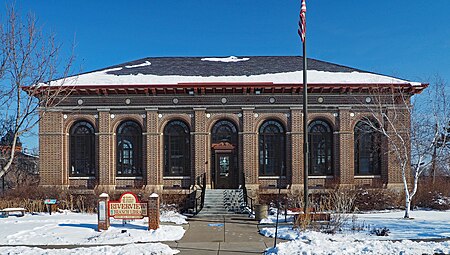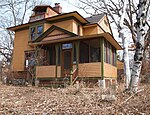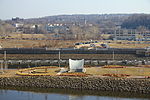Riverview Branch Library
1916 establishments in MinnesotaAC with 0 elementsBeaux-Arts architecture in MinnesotaCarnegie libraries in MinnesotaLibraries on the National Register of Historic Places in Minnesota ... and 3 more
Library buildings completed in 1916National Register of Historic Places in Saint Paul, MinnesotaPublic libraries in Minnesota

Riverview Branch Library is a branch of the Saint Paul Public Library serving the West Side neighborhood of Saint Paul, Minnesota, United States. It is a Carnegie library built in 1916. It was listed on the National Register of Historic Places in 1984 for having local significance in the themes of architecture and education. It was nominated for being one of only three Carnegie libraries built in Saint Paul, one of the first projects of Saint Paul city architect Charles A. Hausler, one of the last American libraries built with Carnegie Foundation funding, and for being an important neighborhood landmark in Beaux-Arts style.
Excerpt from the Wikipedia article Riverview Branch Library (License: CC BY-SA 3.0, Authors, Images).Riverview Branch Library
East George Street, Saint Paul West Side
Geographical coordinates (GPS) Address Nearby Places Show on map
Geographical coordinates (GPS)
| Latitude | Longitude |
|---|---|
| N 44.929916666667 ° | E -93.084722222222 ° |
Address
Riverview Library
East George Street 1
55107 Saint Paul, West Side
Minnesota, United States
Open on Google Maps









